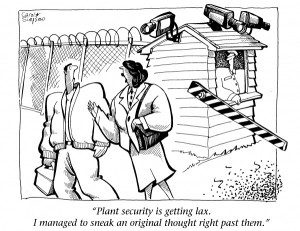Steve Jobs – “Innovation distinguishes between a leader and a follower”
Wow! Not only must leaders be honest, communicate, delegate, exude confidence, show commitment, but they must also drive creativity and innovation. Tall order. Not for the faint of heart.
Innovation
Leaders are accountable to assemble teams and lead them to optimal performance outcomes. An effective leader recognizes the importance of embracing differences in people and knows how to connect the dots amongst those differences to get the best outcomes from the team. This is what cultivates a workplace environment of continuous improvements, innovation and initiative. Leaders must foster a commitment from the team to embrace an innovation mindset where each employee learns to apply the differences that exist in one another for their own success and that of the organization.
Innovation requires a certain type of person: they are passionate explorers in pursuit of endless possibilities. These explorers are courageous enough to take that leap of faith and follow it through all the way to the end
Here are 5 immediate things leaders can do with their teams to foster an environment of innovation and initiative. They apply whether you are forming a new team or revamping an existing one.
1. Trust Yourself Enough to Trust Others
Innovation requires breaking down the old rules of thought and creating new ones. This means each member of the team must become more transparent than ever before. As such, each member of the team must trust themselves enough to trust each other. When you can accomplish this trust, you become more patient, a better listener and over time more grateful for the new experiences and relationships that are being formed.
Then, step back and recognize that – with your ability to co-exist with people in ways that form a family bond – the promise of a new workplace culture can be realized.
2. Collaborate and Discover
It’s not until you begin to trust yourself and others that real collaboration takes root. Collaboration is not just about working closely together, but also about taking leaps of faith together to discover new ways of thinking and create greater outcomes.
You never know which idea will take shape into the new innovation that creates impact and influence in the marketplace – whether a new process, product, packaging, piece of knowledge, etc.
3. Communicate to Learn
Without strong communication, teams can’t find their rhythm and they certainly won’t find the things they are looking for to build trust and collaborate. The manner in which you communicate sets the tone and propels thinking in a variety of directions that leads to new innovations.
A team should view themselves as an innovation lab – constantly challenging each other to learn from each other’s ideas and ideals and to plant the seeds for future innovations.
4. Be a Courageous Change Agent
For teams to innovate, leaders must challenge each team member to think more critically and see through a lens of continuous improvement. Looking through this lens requires the mindset of a “courageous enabler” – one who takes charge and embraces the role of a change agent in support of constructive disruption that ultimately makes things operate better and improves performance.
Every leader must become a change agent or face extinction. As such, their teams must equally be charged to do the same. Accepting the role of a change agent means taking on an entrepreneurial attitude, embracing risk as the new normal, and beginning to see opportunity in everything. As you do, innovation becomes second nature.
5. Course Correct to Perfect
To find the perfect combination of people on a team, leaders must often course correct along the way. Yes, perfection is utopia but course correction steers you closer to the promise of the culture you are attempting to create. Course correction also keeps people on their toes and teaches them to adapt to new environments, where they can showcase their abilities and skill-sets to new people and personalities in different situations and circumstances.
Source: Forbes Contributor – Glenn Llopis -April 7, 2014 .
Like it? Then share it!
